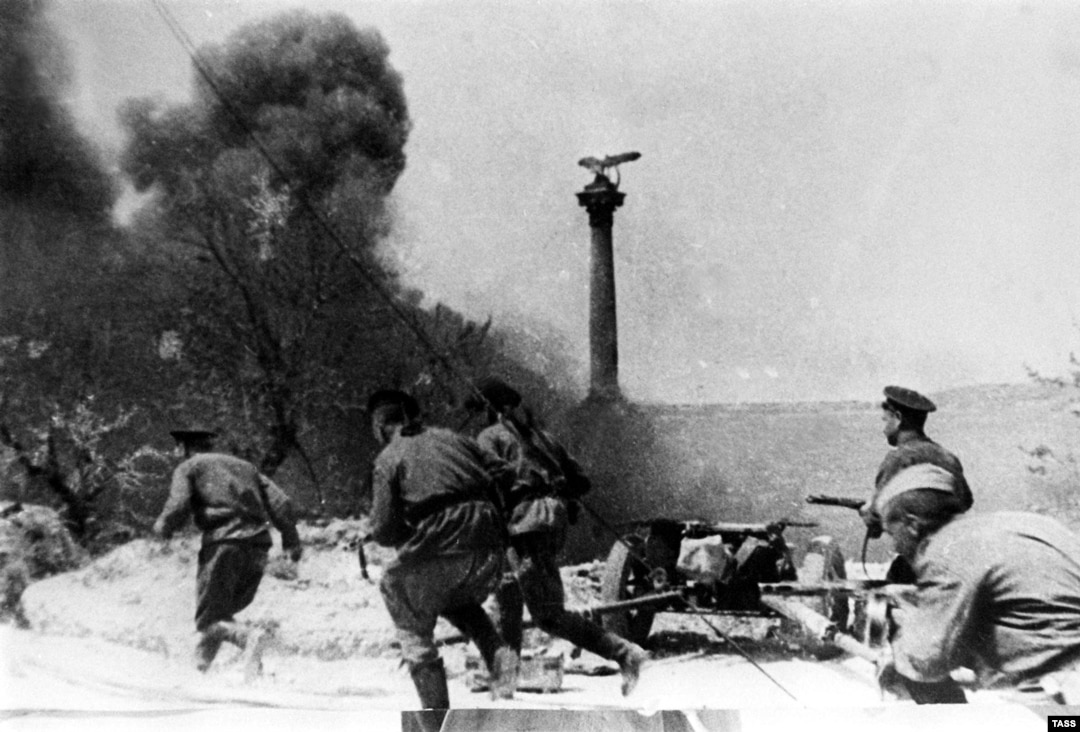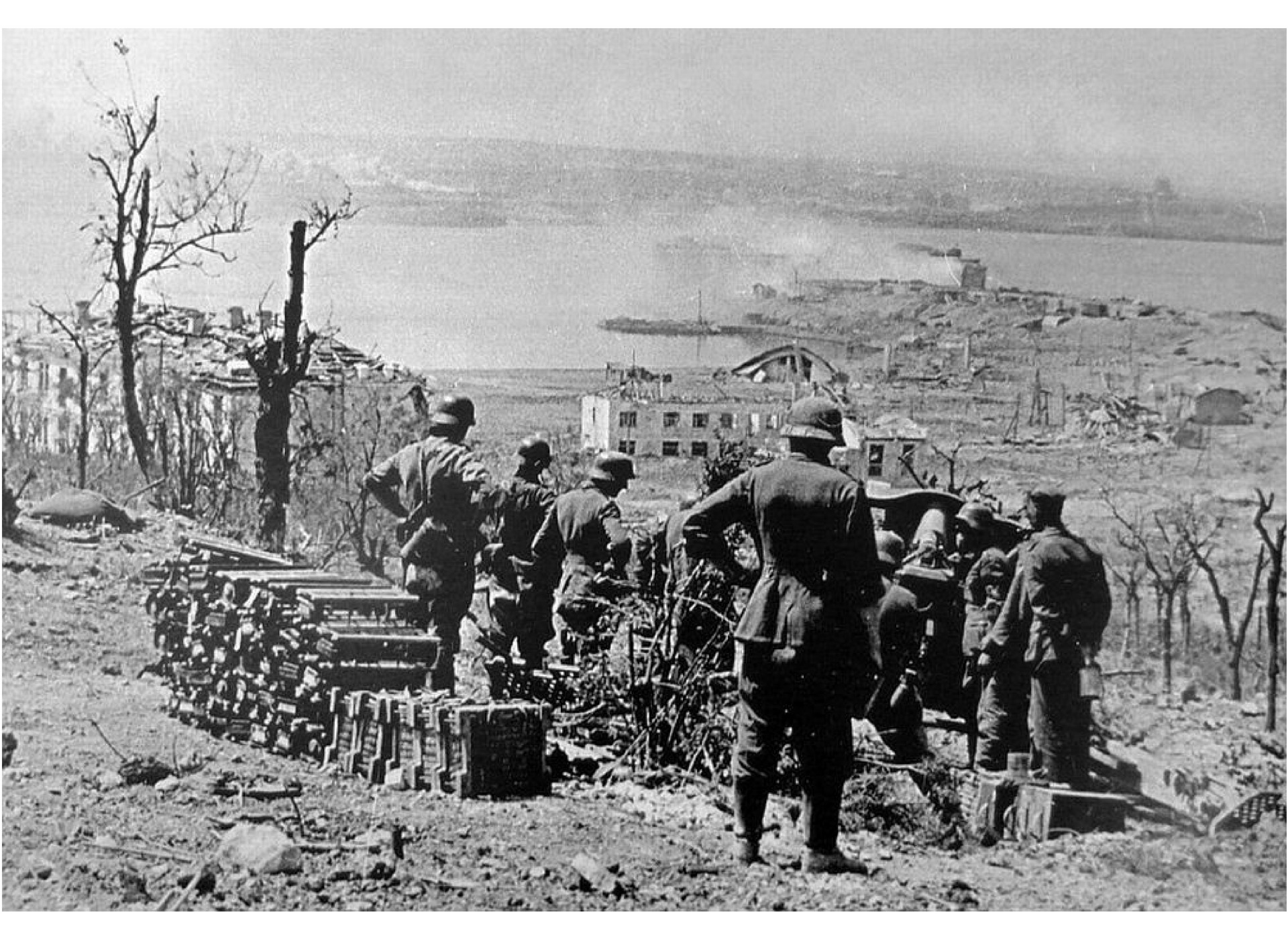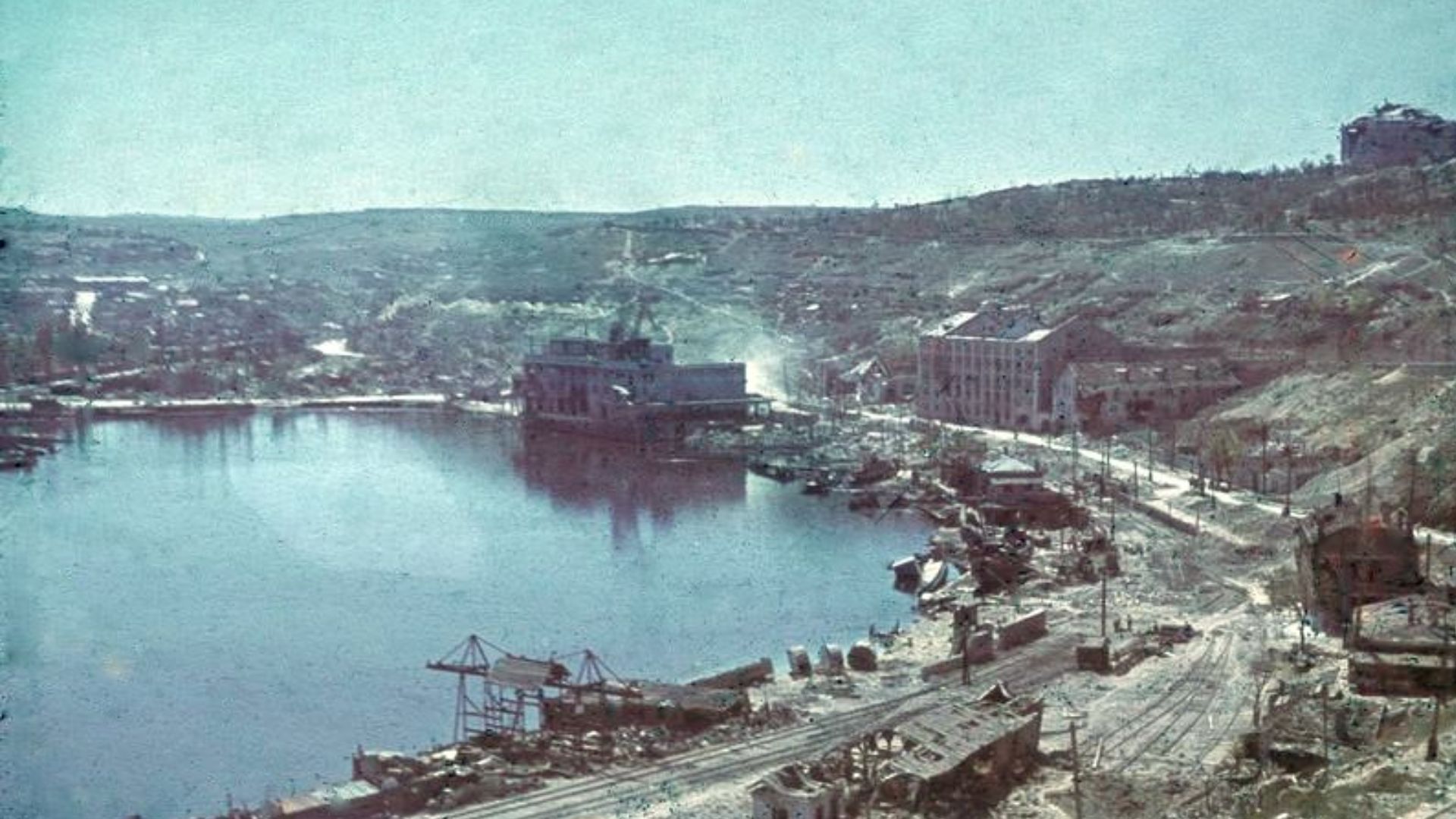
TheSiege of Sevastopol 1941 42stands as a pivotal chapter in the annals of World War II, marking a relentless struggle for control of this strategic port city on the Crimean Peninsula. As the conflict raged on the Eastern Front, the siege became a symbol of resilience and tenacity on both sides. In this article, we delve into the historical context, the strategic importance of Sevastopol, the key players involved, the progression of the siege, and its lasting impact on the war.
Siege Of Sevastopol 1941-42 Background
The Soviet naval facility at Sevastopol was widely regarded as among the world's most formidable defense installations. Its location on the point of southern Crimea, a highly eroded, barren limestone peninsula, made it very difficult for land troops to reach it. Anchorage was safe, but an amphibious landing was risky because of the sheer cliffs that surrounded Severnaya Bay.
The Soviet Navy fortified these preexisting fortifications by upgrading the port and erecting massive coastal batteries armed with 180mm and 305mm repurposed battleship guns that could fire inland as well as at sea. The gun positions were fortified with concrete walls and 9.8-inch thick armored turrets.
Attack On The Port
The port was a valuable target. Because of its strategic location, the Axis might launch extensive naval and aerial operations against Soviet objectives in and around the Caucasus ports and mountains from this possible base.
Since the Axis invasion in June 1941, Crimea has been used by the Red Air Force as a base to assault targets in Romania. At the outset of the invasion, the Wehrmacht had also conducted a bombing strike on the Sevastopol naval facility.
The Offensive Against The USSR
Since the start of Barbarossa, Crimea had not been a significant focus of the onslaught against the Soviet Union. The Germans expected to take the region in mopping-up operations after the main body of the Red Army west of the Dnieper River had been annihilated.
However, in June, Soviet aircraft operating out of Crimea attacked and destroyed 12,000 tons of oil at Romanian oil facilities. In Directive 33, issued July 23, 1941, Hitler defined the region as an "unsinkable aircraft carrier" and ordered the invasion of Ukraine and Crimea as crucial objectives.
Crimea Was To Be Captured
To protect German oil resources in Romania from assault, the OKH issued directives for the rapid conquest of the Crimean peninsula. On 12 August, Hitler reiterated his demand that the Crimea be captured promptly in response to the resistance he had encountered in his orders to advance in the south. Generaloberst Erich von Manstein took over the German 11th Army on September 17th, more than a month after the liberation of Kyiv.
Within his first week in charge, he ordered an attack on Crimea. After a fierce battle, Manstein's troops were able to wipe out two Soviet armies and counterattack unsuccessfully on many occasions. After taking Simferopol, the region's capital, on November 1, the Wehrmacht had finished their work there by November 16. The loss of Kerch on 16 November left only Sevastopol in Soviet hands.
Forces Involved In The Siege Of Sevastopol 1941 42
The German 11th Army, led by Erich von Manstein, besieged Sevastopol. In June of 1942, during the decisive attack, the 11th Army was made up of two German infantry corps and one Romanian mountain corps (7th Mountain Corps). The Luftwaffe provided crucial help.
The Oberkommando der Luftwaffe sent in the 8th Air Corps from Luftflotte 4 (Air Fleet 4). Generaloberst (General Colonel) Wolfram Freiherr von Richthofencommanded all 600 aircraft over nine Geschwader (Wings).
A large number of medium bombers dive bombers, and torpedo bombers made up this Geschwader. Francesco Mimbelli's Italian 101st Squadron provided naval assistance. It had many 35-ton coastal submarines and MAS boats in addition to four motor torpedo boats, five explosive motorboats, and six CB-class midget submarines.
During the siege, this was the sole naval force the Axis had deployed. Although Bulgaria was not officially at war with the Soviet Union, its naval staff collaborated closely with the Wehrmacht. It provided bases for the Axis naval command (Admiral Schwarzes Meer) to operate in the Black Sea.
Attacks On Sevastopol By The German Forces
The port city of Sevastopol has been influential in Russian history since 1783. It houses Russia's Black Sea Fleet and a commercial port. British, French, and foreign armies besieged the city for 11 months in 1854-55. After a gallant fight, the besieged Russians had to abandon their fleet and escape the city.
Crimea was crucial to WWII strategy. The Soviet Union could bomb the Romanian oil reserves at Ploiesti, vital to the Nazi war machine, from bases in and around Sevastopol. In the summers of 1941 and 1942, German soldiers advanced fast into the Soviet Union and intended to cross the Kerch Strait and grab the Caucasus oil deposits. They may also outflank Soviet defenses at Rostov-on-Don and Stalingrad from the south. Finally, Hitler loved taking "trophy cities" like Leningrad, Stalingrad, and Sevastopol.
Soviet soldiers used all resources during the Sevastopol siege. Infantry duties were assigned to Black Sea Fleet sailors and marines. Almost 100,000 residents in Sevastopol were also mobilized during the siege to construct fortifications and move supplies from the port to the military line.
The Soviet-German front changed after the February 1943 German loss at Stalingrad. The Soviets planned a Kerch Strait and Perekop Isthmus assault to recapture Crimea in late 1943. The Soviets ordered German POWs to construct pathways crossing the shallow Syvash Sea to help Red Army troops assault the isthmus. The Red Army attacked Sevastopol in April 1944 after the Germans were forced back.
Historical Significance Of The Siege Of Sevastopol
The Germans claimed they had captured nearly 90,000 members of the Red Army and murdered many more. According to Soviet sources, the garrison defending Sevastopol at the commencement of the siege had 106,000 soldiers, and another 3,000 reinforcements arrived during the battle; this statistic looks to be exaggerated.
Additionally, it is known that Stalin ordered the evacuation of 25,157 people, the vast majority of them were either injured troops or officials.
On July 3, 1942, the gold Crimea Shield was presented to Marshal Ion Antonescu in recognition of Romania's service. It was presented to him by Manstein in Bucharest on Hitler's behalf. On November 24, 1942, Manstein was presented with the second and last Golden Krimschild.
June To 3 July 8
From 2 June to 3 July 8, the Air Corps flew 23,751 missions and dropped 20,528 tons of bombs. Axis ammunition consumption was 67,278 tons in one month after German artillery launched 46,750 tons. Luftwaffe claimed to have destroyed 611 motor vehicles, 123 aircraft (18 ground), 38 artillery pieces, 10 tanks, a train, and a flak barge. 48 Soviet artillery batteries, 28 barracks and industrial structures, 20 bunkers, 11 ammunition and 10 fuel depots, a bridge, and an observation post were destroyed.
Seven artillery pieces, 43 batteries, 2 barracks, and another bridge were destroyed, along with hundreds of cars. German aircraft sank 10,800 tons of Soviet ships, including 4 destroyers, a submarine, 3 motor torpedo boats, 6 coastal vessels, and 4 freighters. 12,000 tons of ships were damaged, including 2 destroyers, 10 coastal boats, and 2 freighters.
Operation Blau Army Group South's
Although the operation was successful in the end, it took far longer than the Germans had anticipated. The German 11th Army was not available to help Operation Blau, Army Group South's push on Stalingrad and the Caucasus. However, the lack of assistance for the German 6th Army under Paulus was a significant factor in their eventual loss.
Lasting Legacy - Symbol Of Resistance
The Siege of Sevastopol endures in historical memory as a symbol of resistance against overwhelming odds. Despite the eventual fall of the city, the determined defense mounted by the Soviet forces left an indelible mark. Sevastopol became symbolic of the broader Soviet resistance during World War II, inspiring subsequent generations and serving as a symbol of the tenacity required to confront existential threats.
Commemoration And Remembrance
In the years following the war, Sevastopol became a site of commemoration and remembrance. Monuments, memorials, and museums stand as a testament to the sacrifices made during the siege. The historical significance of Sevastopol extends beyond the wartime narrative, serving as a solemn reminder of the human cost of conflict and the importance of preserving collective memory.
Geopolitical Implications - Black Sea Control
The geopolitical ramifications of the Siege of Sevastopol extended beyond the immediate theater of war. The Axis control over Sevastopol granted them dominance over the Black Sea, a vital maritime thoroughfare. This control facilitated the Axis powers' ability to project naval power, disrupt Soviet supply lines, and exert influence over the broader strategic landscape. The fall of Sevastopol reshaped the geopolitical chessboard, impacting diplomatic relations and regional dynamics.
Strategic Importance Of Black Sea Access
Sevastopol's location on the Black Sea made it a linchpin in maritime operations. The Axis powers recognized the strategic importance of controlling this vital waterway, enabling them to prevent Soviet shipping, support their naval operations, and extend their reach into the Caucasus region. The implications of Black Sea control reverberated far beyond the immediate theater, affecting the course of subsequent military campaigns and shaping the overall direction of World War II in the East.
Siege Of Sevastopol 1941 42 - FAQs
How Did The Siege Of Sevastopol Impact The Local Militias And Civilians Involved In The Defense?
The local militias and civilians faced overwhelming odds and joined the defense in a desperate bid to protect their homes, contributing to the tenacity of the resistance.
What Were The Logistical Challenges Faced By Sevastopol During The Initial Assaults, And How Did They Affect The Defenders?
The city experienced disruptions in supply lines, exacerbating shortages of essential supplies such as food, medicine, and ammunition, adding to the challenges faced by the defenders.
Who Led The German Forces During The Siege Of Sevastopol, And What Was Their Strategic Approach To Breaching The City's Defenses?
Field Marshal Erich von Manstein led the German forces, adopting a strategic approach aimed at exploiting weaknesses in Sevastopol's fortifications through heavy artillery, aerial bombardment, and infantry assaults.
How Did The Siege Of Sevastopol Impact The Geopolitical Landscape, Considering Its Strategic Importance In The Black Sea Region?
The siege had broader ramifications, as the Axis powers failed to secure the strategic port. Still, the Soviets paid a heavy price for their victory, shaping the geopolitical dynamics of the region.
What Marked The Turning Point In The Siege Of Sevastopol, And How Did The Soviets Manage To Break The Encirclement?
The turning point came in the spring of 1942 when Soviet forces, regrouping and receiving reinforcements, launched a daring counteroffensive that broke the encirclement and shifted the momentum in their favor.
Conclusion
The detailed exploration of the siege of Sevastopol 1941 42 reveals a multifaceted narrative marked by strategic complexity, relentless assaults, and the unwavering resilience of those caught in its tumult. The opening moves, characterized by intense bombardment, logistical challenges, and the tenacity of both defenders and attackers, set the stage for a prolonged and brutal conflict.
As the siege unfolded, it became a poignant chapter in the Eastern Front's history, shaping the geopolitical landscape of the Black Sea region. The turning point, marked by a Soviet counteroffensive, underscored the indomitable spirit that can emerge even in the bleakest of circumstances. The legacy of the Siege of Sevastopol echoes through time, leaving an indelible mark on the annals of World War II and the enduring resilience of those who experienced its trials.


